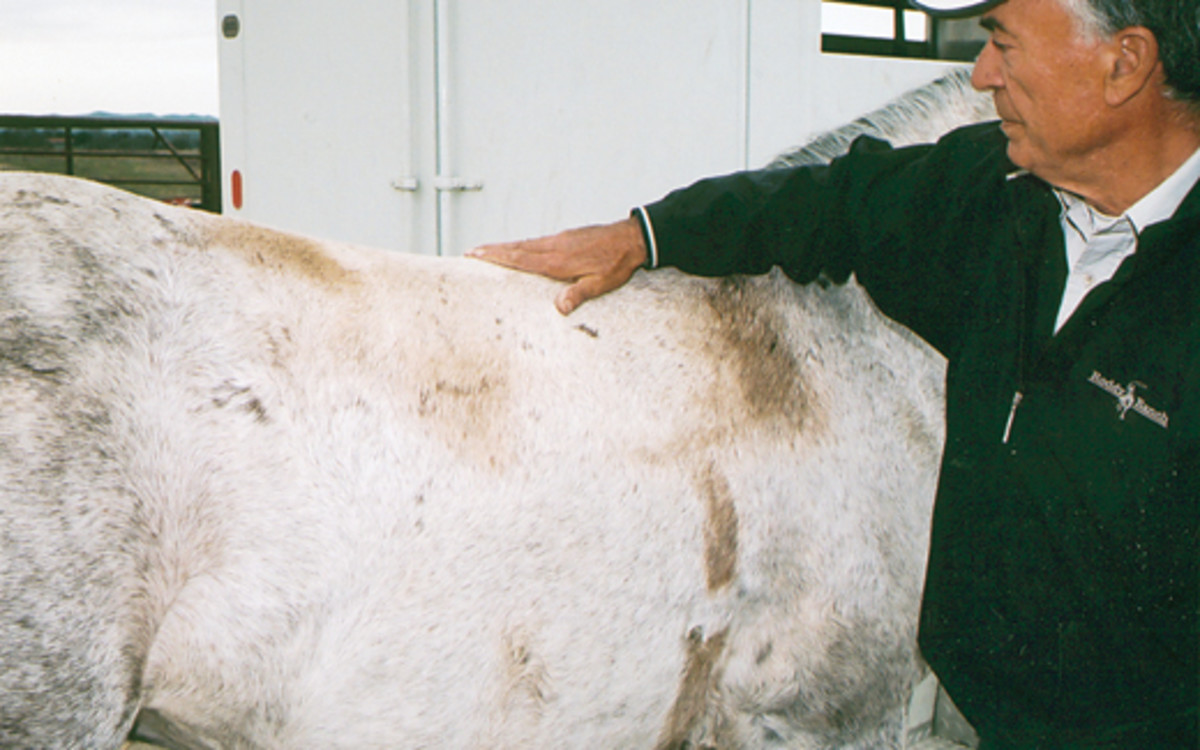
I believe people can learn to do basic wellness checks on their horses in the course of routine grooming and tacking the horse up. If you develop a routine of looking at your horse from the time you walk into the pen or stall to catch him continuously through the time you get on and ride him, you can have a check-up done with really no extra time costs. You just need to put your senses of sight, smell and touch into use.When you first approach your horse to catch him, you can evaluate his expression and attitude. A look at the manger and feeder tells you if his appetite’s normal. If he left part of his hay, go look at it and see if that flake of hay was okay or if it had some foxtail in it. The horse is a pretty good judge of hay quality.How you proceed stepwise in grooming is a matter of personal preference. I usually start by brushing off my horse. I take more time and care in doing this now than when I was young and in a hurry.My horse seems to like it, and we start off our interaction on a friendly basis. While brushing him, I make an observation of the back and girth regions. I’ll run my hand over these areas to feel the condition of the skin and underlying tissues, and am aware of the horse’s response. I’d mention here that I use a fairly “flat” hand to run down a horse’s back. Any horse will “flinch” if you put significant pressure on his back with the point of your finger or thumb.
The next thing I routinely do is clean out the horse’s feet with a hoof pick. I don’t just reach down and grab his foot to pick it up. I run my fingers down the flexor tendons to the back of the fetlock, and the horse will “give” me his foot. By the time I’ve picked up the horse’s foot I know how the flexor tendons and suspensory ligament feel, and the horse’s response if there is a tender spot. I’ve also noted if there’s hair knocked off the inside of the fetlock or a bruise if he’s interfering or hitting himself at work. I clean out the foot with special care to get down into the sulcus on each side of the frog, making sure there are no pockets of moisture that are foul smelling. Saddling the horse is pretty straightforward unless you notice him flinching abnormally. I never pull the cinch up with any pressure until I’ve walked the horse a few steps before I get on. When putting a bit in a horse’s mouth you can note any abnormal saliva or odor that may indicate a problem.
If you develop some of these points into a routine, you will have a feel of what’s normal for your horse that will be reliable and won’t cost a minute of extra time.STW










